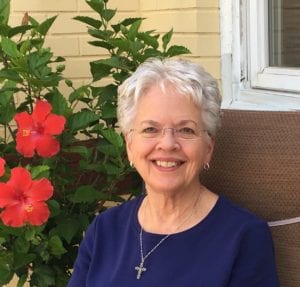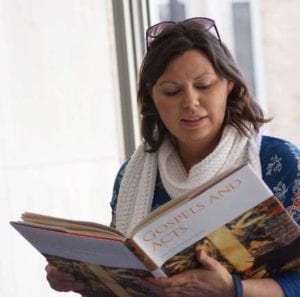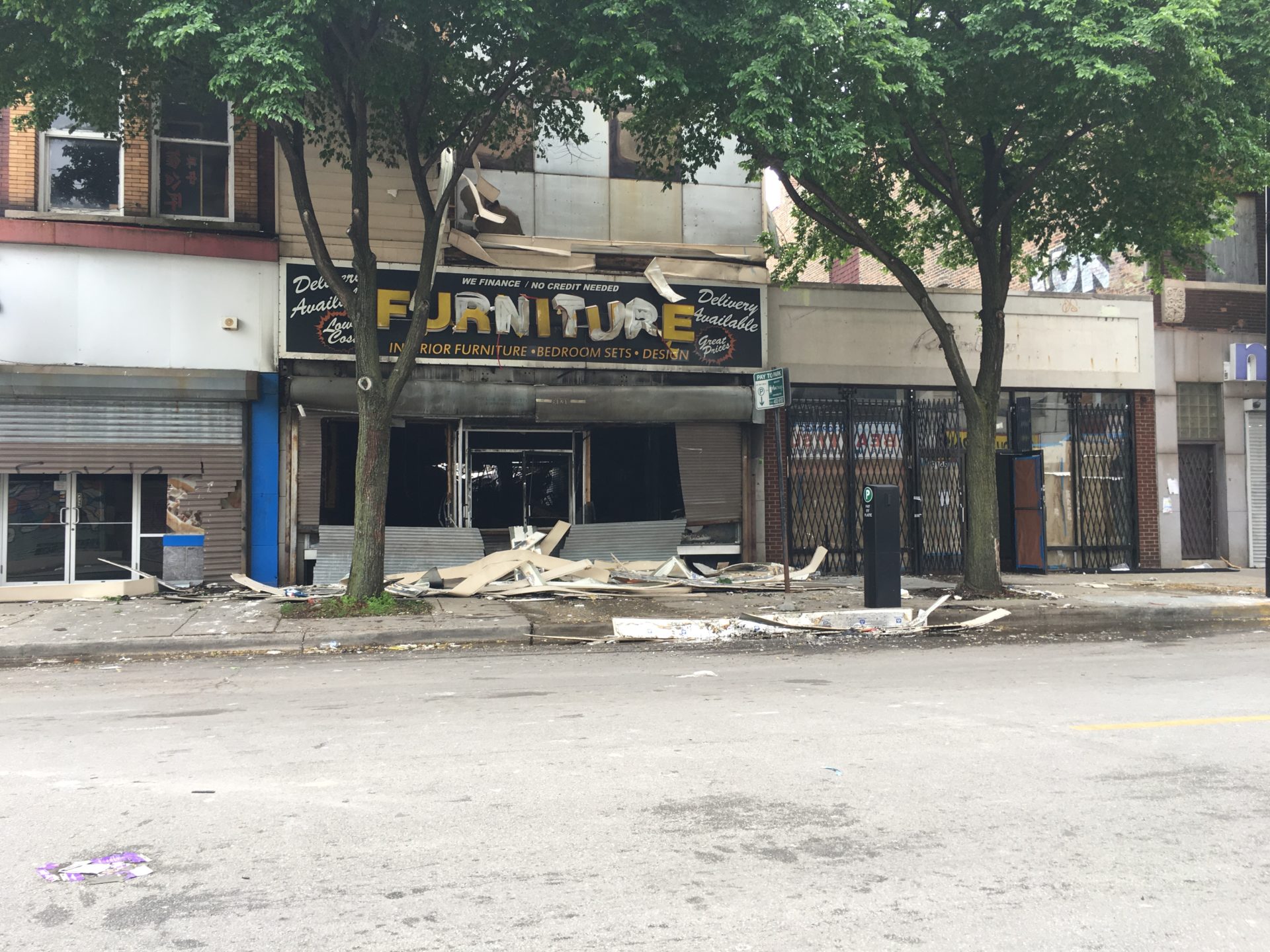This article was originally published in the Winter 2020-2021 Edition of JUST Words.
 Sister Judine Hilbing reflects:
Sister Judine Hilbing reflects:
It was the feast of the Visitation, a day to remember Mary as she ran with joyful news to her cousin Elizabeth. It was also the Sunday of Memorial Day weekend and COVID-19 had cancelled all hope of family and friend gatherings such as Mary and Elizabeth had enjoyed. We had just witnessed the murder of George Floyd, and city streets everywhere were filled with rage, violence, and a search for justice. In Chicago, a perfectly beautiful spring day stood in sharp contrast to what I witnessed from my bedroom window. At precisely 2 p.m., the alleys outside St. Martin de Porres Convent became jammed with cars arriving from all directions as violence, looting, and burning descended upon the stores within a block of my view.
For two hours, I stood riveted to the scene playing out before my eyes. I was not watching the news; I was standing in the midst of it, and all I could do was search for understanding. I prayed if there were any measure of peace within my soul, it would somehow connect with that which I did not fully understand. I stood, I watched, and I tried to understand. The pain is so deep. How do we heal?

Erica Smith Responds
In scenes of unleashed rage— violence, looting, destruction—if we want peace, we must resist the temptation immediately to determine who is wrong and instead first ask, “What happened here?”
This shift in approach is a basic tenet of being trauma-informed, which means we know what trauma is and how it affects individual and community behaviors and health. We can identify signs that a person or community has experienced trauma, and we intentionally build responses and environments that avoid re-traumatization.
What Sister Judine watched— and the trauma she experienced by watching—is a response to the community trauma of racism and inequity. Community trauma affects the individual, but is experienced collectively by populations, even if the individuals within the population have different roles and perspectives in the traumatic event(s).
Community trauma is passed down over generations and changes how our DNA is read and transcribed. It’s in the stem cells that create every part of our body. It’s in the deepest part of our brain, the area gifted to us by an ancient ancestor whom reptiles and mammals share. And it’s in our collective unconscious that houses memories and stories from those we descended from long ago.
When that trauma is triggered, the amygdala (the brain’s fire alarm) activates the fight or flight response. The amygdala, however, cannot speak or reason—that’s what our prefrontal cortex is for. All the amygdala can do is react, and most commonly expresses aggression, but it also can express avoidance or apathy. These automatic expressions must be understood as an innate survival response to trauma. People with a history of individual and/or community trauma may not be able to articulate or control this natural reaction; it literally happens before they can think.
The “what happened?” for many was watching a Black man be lynched by a white knee; but that is not the whole story. The murder of George Floyd set off a reaction in many people of color that white people cannot comprehend. This is more than one “bad cop” in one botched arrest. This is 400 years of Black lives mattering less than white ones. America was founded by men who wrote of freedom and justice, yet owned and sold enslaved people, whom they counted as “three-fifths” of a human being. This is four centuries of legalized violence, oppression, and discrimination that looted and silenced millions of men, women, and children because of the color of their skin.

Science will tell you that when people are triggered by trauma and cannot articulate the pain because it is too deep for words, they will simply make you feel the way they feel. That may be anger, or frustration, or terror—but you won’t leave the situation until you experience the same emotions.
When we pause to consider the intergenerational suffering created by the institution of slavery, and the experience of inequity, violence, and intimidation people of color still survive, we may begin to see the depth of the trigger that George Floyd’s death was; and, how for some, taking to the streets to destroy may have been the only way to express their trauma.
The fact that many Caucasians were equally—or more—upset to see Target burn than a Black man die only further fueled the anger that burned for weeks.
This is what happened and what is still happening. Until we give all human experiences space to exist, to be heard, to be mourned and apologized for, we will not heal. Our society’s most typical reaction when we see the aggression, apathy, or avoidance (all survival trauma responses) is to blame and punish; but this actually re-traumatizes and further instills the behavior that is destructive.
When we stop to listen to what has happened before we make judgments, as Sister Judine sought to do, we are on the road to healing. And yes, undoubtedly, we will find both right and wrong as we listen; it is wrong to destroy another’s property. But if we fail to see the relevance of the truth that until recent history Black people themselves were considered property, and if we fail to see that they still endure the kind of injustice that led a police officer to kneel on a man’s neck until he suffocated, we will not find a way to heal that ends the violence that re-traumatizes us all.
Erica Smith is a SAMHSA-certified Trauma Informed Care trainer and a Springfield Dominican associate. SAMHSA is an acronym for Substance Abuse and Mental Health Services Administration. Sister Judine is a member of the JUST Words editorial board.
Learn more:

